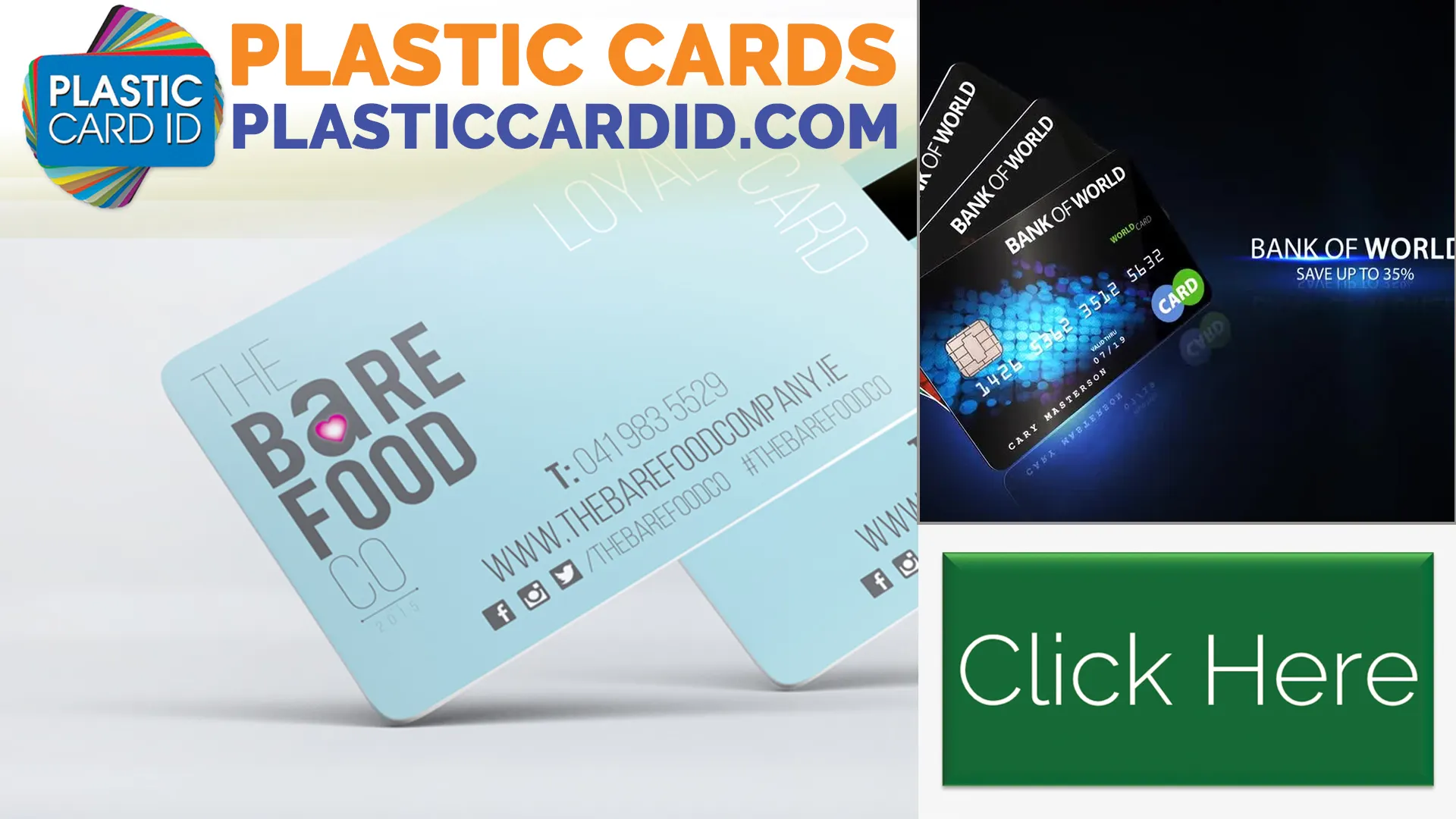Trends in Financial Advisor Business Cards
Table of Contents []
- Trends In Financial Advisor Business Cards
- Plastic Card ID Spotlight: Trends in Financial Advisor Business Cards
- Incorporating Minimalist Design
- The Rise of Eco-Friendly Business Cards
- Leveraging Digital Business Cards
- Smart Cards with NFC Technology
- Personalized and Branded Business Cards
- The Trend of Multi-functional Business Cards
- Creative Shapes and Sizes
- Using Luxurious Materials
- Augmented Reality (AR) Business Cards
- Making a Stellar First Impression
- The Future Trends in Business Cards
Trends In Financial Advisor Business Cards
Plastic Card ID Spotlight: Trends in Financial Advisor Business Cards
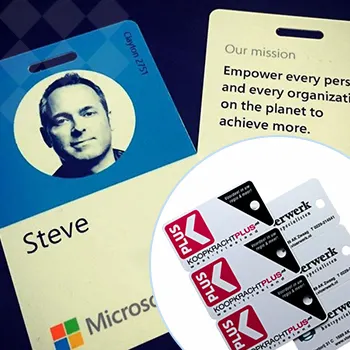
In the evolving world of finance, even the humble business card is undergoing significant transformation. Financial advisors are increasingly looking to make powerful first impressions through innovative design trends, new materials, and unique features. At Plastic Card ID, we explore these emerging trends to provide valuable insights for financial advisors eager to update their business cards. Read on to discover what's new and what's next for these essential networking tools.
Incorporating Minimalist Design
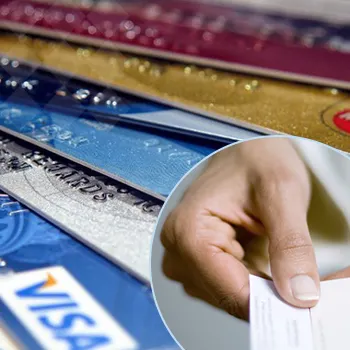
Minimalist design has become a hallmark trend in business cards. Simplicity in design communicates professionalism, clarity, and sophistication, which are crucial traits for financial advisors. A clean, uncluttered card allows the important information to stand out more effectively.
Key Features of Minimalist Cards
If you want to make a memorable first impression, consider the following:
- Bold Texts: Choose simple yet bold fonts that are easy to read. This ensures that your name and title are easily visible.
- Ample White Space: Having sufficient white space around text and logos not only looks elegant but also ensures readability.
- Selective Color Palette: Opt for a limited color palette, focusing on neutral and muted tones. This keeps the focus on the essentials.
Using High-Quality Finishes
High-quality finishes like matte, glossy, or embossed textures can elevate a minimalist design. These finishes can add a touch of sophistication and make your card stand out.
Matte Finish: A matte finish offers a sleek and modern look, reducing glare and giving the card a premium feel.
Glossy Finish: Glossy finishes are shiny and can make colors pop, making the card visually striking.
Embossing: Embossing adds a tactile element to the card, making it feel more substantial and memorable.
QR Codes and Interactive Elements
A minimalist card doesn't have to be devoid of technological features. Integrating QR codes allows for a seamless connection to your digital portfolio or LinkedIn profile without cluttering the design.
Seamless Integration: Place the QR code unobtrusively in a corner, maintaining the card's clean look.
Ease of Access: Modern Touch: QR codes highlight that you're keeping up with technological advancements, which can be attractive to tech-savvy clients. In an era of increased environmental awareness, many financial advisors are opting for eco-friendly business cards. These cards are made from recycled materials or alternative substances like bamboo, making them an excellent choice for sustainability-conscious professionals. Eco-friendly cards offer numerous environmental benefits that can help improve your brand's image:The Rise of Eco-Friendly Business Cards
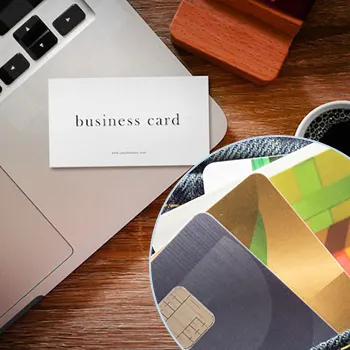
Environmental Benefits
- Reduced Carbon Footprint: Using recycled or sustainable materials minimizes the environmental impact associated with card production.
- Positive Brand Messaging: Show clients and partners that you're committed to sustainability, enhancing your reputation o endorse sustainability.
Material Options
Eco-friendly business cards are no less diverse in terms of material choices:
Recycled Paper: These cards use post-consumer waste, reducing landfill impact.
Bamboo: Bamboo is a highly renewable resource, making it an excellent choice for eco-friendly business cards.
Seed Paper: Cards made from seed paper can be planted. Once disposed of, they result in a plant, merging functionality with sustainability.
Aesthetic and Functional Flexibility
Just because a card is eco-friendly doesn't mean it has to be boring or unattractive. Modern techniques allow for beautifully designed cards that are also environmentally responsible.
Print Quality: High-quality printing techniques can be applied to eco-friendly materials without compromising on clarity and vibrancy.
Design Options: From minimalist to intricate designs, eco-friendly cards can cater to various tastes and styles.
Durability: These materials can be surprisingly durable, ensuring that your card stands up to daily wear and tear.
Leveraging Digital Business Cards
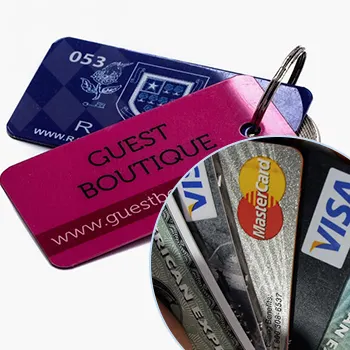
In the digital age, traditional printed business cards are being supplemented and sometimes replaced by digital business cards. This trend offers a range of benefits, especially for tech-savvy financial advisors.
Advantages of Digital Cards
Digital business cards present numerous advantages:
- Instant Sharing: These cards can be shared instantaneously via smartphone or email, making networking seamless.
- Cost Efficiency: Without the need for physical printing, digital cards prove to be a cost-effective solution.
Enhanced Features
Digital cards can include features that extend beyond what a traditional card can offer:
Interactive Elements: With clickable links to your portfolio, social media, or other resources, clients can access information with a single click.
Real-time Updates: Keeping your information up to date is easy. Change your number or update your title? Simply modify your digital card.
Customizable Design: Digital cards can be easily customized to match your branding without the need for reprinting.
How to Integrate Digital Cards
Incorporating digital cards into your networking strategy is not complex. Here's how:
Smartphone Apps: Numerous apps available can create and store your digital business cards, making sharing hassle-free.
Email Signatures: Include a link to your digital business card in your email signature for continuous sharing.
QR Codes: Even your printed cards can feature a QR code that links to your digital card, blending traditional and modern approaches.
Smart Cards with NFC Technology
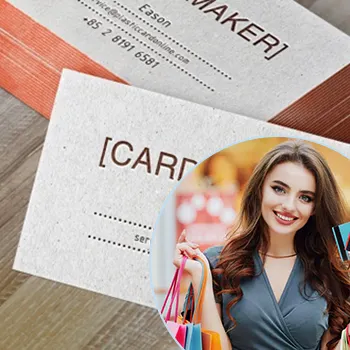
Near Field Communication (NFC) technology is making waves in the business card industry. These smart cards enable the exchange of contact details through a simple tap, making the process faster and more convenient.
Why Use NFC Technology?
Integrating NFC technology into your business cards offers a range of benefits:
- Convenient Sharing: With a simple tap, information is transferred, eliminating the need for manual entry.
- High-Tech Appeal: NFC cards present you as a forward-thinking professional embracing cutting-edge technology.
Potential Applications
NFC technology can be adapted to numerous functionalities to make your card stand out:
Instant Website Access: Direct taps to your professional website or portfolio, providing instant access to additional information.
Calendar Sync: Use NFC to instantly add an appointment with you to a client's calendar, making scheduling seamless.
Contact Import: Save clients the effort of manually entering your details. With one tap, they can import your contact information directly into their phone.
NFC Card Design
Despite the added technology, NFC cards can maintain an elegant design:
Discreet Integration: NFC chips are tiny and can be incorporated without compromising the card's visual appeal.
Design Versatility: From minimalist to intricate designs, NFC technology doesn't limit your design choices.
High Durability: These cards remain robust and durable, maintaining their premium look over time.
Personalized and Branded Business Cards
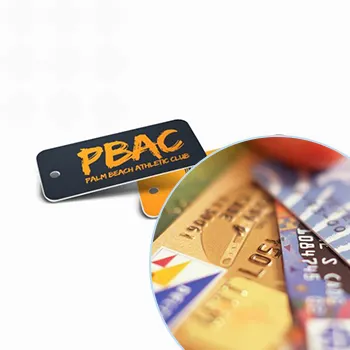
Personalization and strong branding have become crucial elements in business card design for financial advisors. Custom colors, fonts, logos, and even images of the advisor themselves can make a memorable impression.
Elements of Personalization
Personalizing your business card can help you leave a lasting impact:
- Custom Colors: Choose colors that align with your brand's identity to create a cohesive look.
- Logo Placement: Ensure your logo is prominent but not overpowering, maintaining a balance in design.
Brand Cohesion
Maintaining brand cohesion across all your professional materials, including business cards, is crucial:
Consistent Fonts: Use the same fonts on your business card as you do on your website and other promotional materials to ensure a unified look.
Matching Colors: Your business card's color scheme should match your brand's color palette, reinforcing your brand identity.
Unified Messaging: Ensure the language and messaging on your business card align with your overall branding strategy.
Unique Design Elements
Consider adding unique design elements to make your card stand out:
Advisor Image: Adding a professional headshot can make your card more personal and easily recognizable.
Custom Artwork: Incorporating artwork that reflects your brand's ethos can add a creative touch.
Distinct Layouts: A distinctive layout can differentiate your card from standard designs, making it memorable.
The Trend of Multi-functional Business Cards

Multi-functional business cards are growing in popularity. These cards serve more than just a single purpose, blending utility with information sharing.
Functional Examples
Here are practical ways to make your business card multi-functional:
- Appointment Cards: Include a space for writing appointment details, making the card dual-purpose.
- Referral Cards: Add a section where clients can refer others to you, incentivizing word-of-mouth.
Benefit of Multi-functionality
Multi-functional cards offer several advantages:
Added Value: By serving more than one purpose, these cards offer additional utility to clients.
Increased Retention: Cards with functional components are more likely to be kept by the recipient, enhancing long-term retention.
Versatility: They serve various roles, from appointment reminders to loyalty cards, making them a versatile networking tool.
Industry Examples
Several industry examples showcase how multi-functional business cards can be effectively used:
Healthcare Industry: Appointment reminder cards are prevalent, demonstrating their utility across sectors.
Retail Sector: Referral cards are often used to incentivize new business through personal recommendations.
Real Estate: Cards featuring property information allow them to function as mini marketing brochures.
Creative Shapes and Sizes
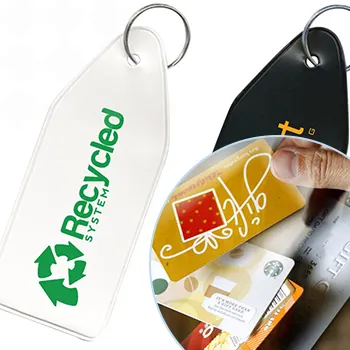
Business cards are no longer confined to the standard rectangular shape. Financial advisors are exploring creative shapes and sizes to make their cards more memorable and engaging.
Shaped Cards
Creatively shaped cards can break the mold and capture attention:
- Die-Cut Designs: Custom die-cut designs can create unique shapes that stand out, such as a card shaped like a dollar sign or house for real estate advisors.
- Rounded Corners: Rounded corners can give a card a softer, more modern look compared to traditional sharp corners.
Size Variations
Different sizes can also make your card pop out from a stack:
Mini Cards: Smaller cards can be charming and memorable, fitting easily into wallets and cardholders.
Oversized Cards: Larger cards make a bold statement and won't easily be lost or thrown away.
Folded Cards: Cards that fold can offer double the space for additional information, photos, or even mini portfolios.
Design Considerations
Keep these considerations in mind for non-standard cards:
Practicality: Ensure that the shape and size are practical and easy to handle.
Storage: Consider how the card will be stored by the recipient. Too big or oddly shaped might pose storage challenges.
Professionalism: While creative shapes can be fun, they should still align with your professional image.
Using Luxurious Materials
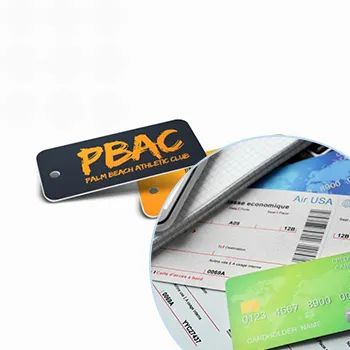
Utilizing luxurious materials can elevate the look and feel of your business card. Financial advisors who want to portray a high-end image will find these materials extremely beneficial.
Popular Luxurious Materials
Using high-end materials can set your card apart:
- Metal Cards: These durable cards exude luxury and permanence, often used by top-tier professionals.
- Leather: Incorporating leather elements offers a tactile and visually rich experience.
Finishing Techniques
Additional finishing techniques can add to the luxurious feel:
Gold Foil: Adding gold foil accents can give your card an opulent touch.
Textured Paper: Using high-quality, textured paper adds a tactile element that feels premium.
Embossing and Engraving: These techniques add depth and sophistication to your card design.
Design Tips for Luxurious Cards
Ensure your high-end card materials are complemented by superior designs:
Simple Elegance: Keep the design elegant and understated to let the material shine.
High Contrast: Use high contrast between text and background for easy readability.
Professional Design: Ensure that the card design reflects your professional brand image unequivocally.
Augmented Reality (AR) Business Cards
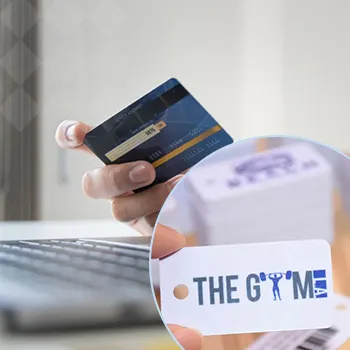
Augmented Reality (AR) business cards are pioneering the future, offering an immersive, interactive experience. Financial advisors can leverage AR to provide a deeper connection with their clients.
Benefits of AR Business Cards
AR business cards offer exciting advantages:
- Innovative Experience: Create a memorable first impression with an interactive experience.
- Additional Information: Embed additional information like testimonials, videos, and more within the AR experience.
Creating AR Content
Designing content for AR business cards involves creativity and technology:Plastic Card ID presents a tech-savvy front:
Interactive 3D Models: Showcase financial diagrams or tools in an interactive 3D format.
Video Introductions: Add a video introducing yourself, giving a personal touch to the client interaction.
Portfolio Showcase: Use AR to show an interactive portfolio of your services and accomplishments.
Client Interaction
How clients use and benefit from your AR cards:
Mobile Integration: Clients can scan the card with their mobile devices to access the AR content.
Easy Updates: AR content can be updated easily without the need to reprint cards, keeping your information current.
Enhanced Engagement: Engage clients more deeply, making a lasting impression that traditional cards might not achieve.
Making a Stellar First Impression
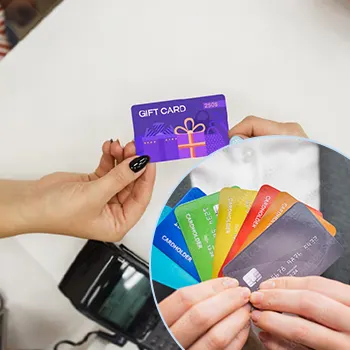
Ultimately, your business card is often the first impression you make on a potential client or partner. Ensuring it reflects your professionalism and brand is critical.
Key Design Principles
Ensure your business card adheres to these key design principles:
- Simplicity: Ensure your card is not cluttered, making essential information easy to find.
- Professionalism: The card should reflect your professionalism, including high-quality materials and clear, concise information.
- Relevance: Tailor your card's design to your industry and personal brand.
Choosing the Right Material
The material you choose can convey different aspects of your professional persona:
Paper: Classic, versatile, and suitable for most purposes.
Metal: Durable, high-end, and signals top-tier professionalism.
Eco-Friendly Options: Shows a commitment to sustainability and modern values.
Leveraging Technology
Modern technology can enhance your business card's functionality:
Digital Integrations: QR codes and AR augment the traditional card's capabilities.
NFC Technology: Faster information exchange and modern appeal.
Interactive Elements: Use technology to create a unique, memorable networking experience.
Get an Instant Quote
Visit PlasticCardID to get started!
The Future Trends in Business Cards
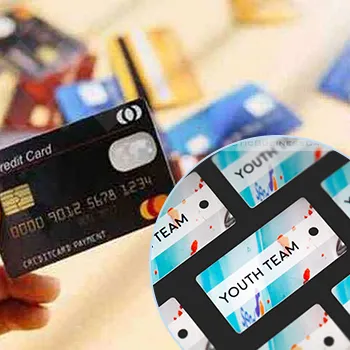
The landscape of business cards is ever-evolving, and staying ahead of the trends can give you a competitive edge. Plastic Card ID predicts several future trends that financial advisors should consider.
Forecasted Design Trends: Keep an eye on emerging visual trends and integrate them early.
Plastic Card ID is dedicated to providing these cutting-edge insights to enhance your professional presence. National availability ensures that no matter where you're located, you can benefit from our expertise.
Contact Us
Ready to update your business card to reflect the latest trends and technologies? Contact Plastic Card ID today at 650-300-9340 for personalized assistance and the best options tailored for financial advisors.
Stay Ahead: Implement the latest trends to leave a lasting impression.
Expert Guidance

